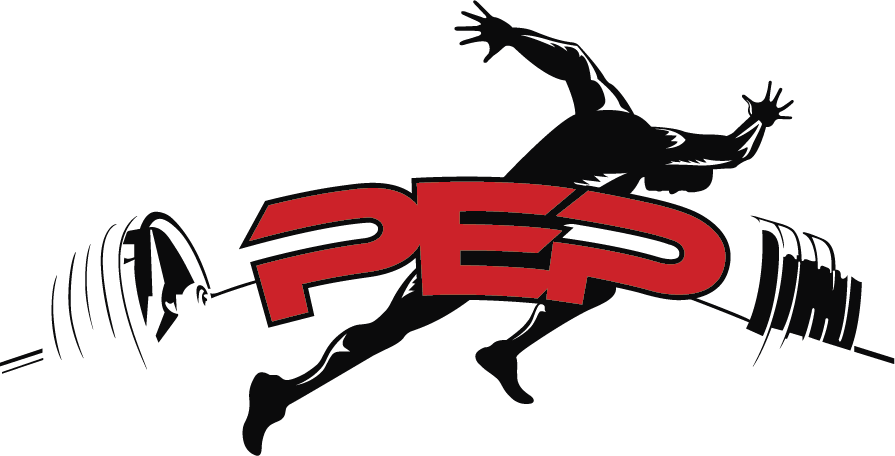
High Intensity Strength Work During In-Season
Injuries in sports are generally non-negotiable, but upping your strength to include high-intensity strength work throughout the duration of your training — that means off-season and in-season — may just be the key to creating a stronger and more efficient athlete, as well as decreasing the risk of serious injuries.
If you’re looking to improve performance and increase, or at least maintain, strength for your athletes, why not incorporate big lifts and minimal reps? Not only does it reduce the soreness and fatigue that results from too high-volume training, but high-intensity work also seems to be much more effective.
Strength Training For Sport
For most sports, strength training programs incorporate a good variety of exercises — squats, deadlifts, presses, pulls, medicine balls, etc. — that provide challenge to the entire body using standardized rep ranges of 8, 10, and 12 with 3 to 5 sets. Many experts believe that 8-12 is the optimal rep range for building strength, but there is a substantial amount of evidence to suggest otherwise.
So why is the 8-12 range touted as ideal?
A rep range of a 2 second concentric (lifting) action with a 2 second eccentric (lowering) movement will set the end of the set up right in the middle of the 30 to 60 second range that every set of an exercise should aim to finish in. When a rep lasts longer than a few seconds, the body is forced to use a new pathway for energy, glycolysis, which results in the build up of lactic acid. While traditionally thought of as a downfall to training, lactic acid and inflammation are actually key to the muscle building process. Lactic acid buildup stimulates the release of anabolic hormones in the body that promote muscle synthesis, which includes growth hormone and the most well known muscle builder, testosterone.
When you increase time under tension, more muscle damage incurs, which ultimately leads to more growth. Theoretically, the longer a muscle contraction is, the more potential there is for tissue damage. When combined with a challenging weight, the moderate (8-12) rep range will bring about that muscle pump that everyone strives for during a workout. This ‘muscle pump’ can activate protein synthesis and limit protein breakdown.
Time-Under-Tension Theory
There’s also a little thing called the time-under-tension theory. Technically speaking, the time under tension should be a good indication of the dosage of the hypertrophic stimulus provided by a workout. However, standard definitions of time under tension account for which muscle fibres are subjected to tension or the level of tension they experience.
Hypertrophy is mostly the result of single muscle fibres inside of a muscle that increase in size; they grow once you subject them to a mechanical loading stimulus, as in the case of weight lifting.
Motor units control force production in much the same manner regardless of the type of training, whether that be aerobic or strength. However, the difference lies with the speed of contractions. For endurance type activities such as running or cycling, muscle fibre shortening speeds are slow, which allows for a high level of force production. Given that the effort level is low compared to other activities where maximal effort is exerted, like power lifting, it’s likely low-threshold motor units that produce the force. Exposing these low-threshold units to tension for long periods of time, as with endurance activities, doesn’t stimulate significant muscle growth. Actually, it appears to decrease the size of all types of muscle fibres.
With that said, this is where the typical definitions don’t encompass the types of muscle fibres that are subjected to tension. They assume that muscles controlled by low-threshold motor units produce the same level of hypertrophy as high-threshold muscles.
When it comes to the level of tension that muscles experience, subjecting high-threshold motor units to low tension levels does not produce muscle growth. This is because high-velocity movements, such as jumping, involve high levels of motor unit recruitment and the movement velocity itself is what stimulates fibres to grow; mechanical loading is what determines the extent of the hypertrophic stimulus.
The activation of a muscle fibre does not mean growth will occur, but rather is determined by the muscle protein cross-bridges that form when a muscle is under tension. As such, the time a muscle spends under tension refers to the time for which muscle fibres are subjected to a specific level of tension that surpasses a specific threshold, which ultimately requires a slow muscle fibre shortening velocity.
At the end of the day, a moderate-rep range may be the best way to build muscle mass, as it increases the hormone response, spares protein use, and provides the necessary time under tension to stimulate muscle damage. But that’s not to say that low-rep or high-rep programs should be swept under the rug. To keep the body constantly adapting, it’s important to vary training to include low, moderate, and high reps, while consistently increasing strength.
Rep Ranges for Strength
If you’re going for a 1RM, the 8-12 rep range shouldn’t be out of the question. Many strength and conditioning coaches suggest that you train 5 reps as the maximum in this zone. However, if you’re going for the highest level of strength with a certain weight, you probably won’t be able to maintain it through 5 well-formed reps. Instead, aim for a range of 1-3 reps if going for absolute strength.
As we mentioned above, the 8-12 range seems to be optimal for muscle growth. However, many athletes complain about soreness and fatigue when using this range, which impacts their athletic performance and subsequent training sessions. In this range, it’s often sub-maximal weight used with sub-maximal effort.
In most sports, as competition season starts, the emphasis on training decreases because there simply “isn’t enough time” for practice, games, and training. When this is the case, coaches should focus on getting their players to lift after the game, rather than expending unnecessary energy before and risking reduced performance during the game.
Any coach and player knows that during in-season, making strength gains, or even just maintaining strength, can be difficult. With practices and constant games come not only increased physical stress, but also increased mental stress that it takes to maintain high intensity and perform at their best everyday. This takes a huge toll on players. It’s no surprise, then, that as the season progresses the players get weaker, slower, and more fatigued. In order to prevent that from happening, or at least decrease the progression, the goal should be focusing on reducing loss of strength rather than trying to maintain strength. Players won’t get as weak, fatigued, and slow as they otherwise might.
Off-Season Training Program
For any sport, off-season is an important time to build up the strength needed for athletes to perform their best once the season starts. After all, the in-season training program is set up by all of the other training phases.
Off-season training should focus on adding weight as the weeks go on and decreasing the number of reps for each exercise — essentially, the principle of overloading. To avoid players becoming sore from a high-volume program early on in off-season training, it’s best to start slow and work up to heavier weights.
For example:
Week 1 — 3 x 4 or 1 x 10
Week 2 — 3 x 6 or 2 x 10
Week 3 — 3 x 8 or 3 x 10
Week 4 — 3 x 10 or 4 x 10
This method is great for a few reasons:
-
- It limits the amount of soreness a player will experience
- It’s great for players just starting out with strength training to learn technique and gain strength
- It allows veteran athletes to work on their fitness repetition
Spring Season Training Program
Pre-season training is similar to off-season training, however the beginning should start with a lighter than normal weight with the same rep range to account for increased activity in the specific sport.
All sports teams have some players who push hard throughout off-season and others who do the bare minimum, so it’s important that training programs consider both types of players.
Players Who Trained Hard. Recovery periods are critical for players that have been putting in an effort. If you want to see progress, you have the give the body a rest. But ‘a rest’ doesn’t mean stopping all strength and conditioning; it simply means toning it down. Doing so allows for:
-
- Decrease in strength and conditioning activity due to an increase in sport specific activity (practice, games)
- Difficulty associated with improving physical capacity while simultaneously improving sport specific skills
- Avoidance of soreness and fatigue that will hinder improvement
- Better focus on the game
Players Who Put In Minimal Effort. Athletes are just like anyone else — they have significant others, children, illnesses, and other disruptions in life that impact their training schedules. But if the player is too tired to play the game because their training schedule didn’t fit their physical status, it won’t be good for anyone.
In-Season Training Program
The goal of an in-season training program should be to keep players as strong as possible while minimizing fatigue and muscular soreness.
With baseball, for example, a sample program may look something like this:
April-May:
- Core lifts – 3 reps
- Supplemental lifts – 4-8 reps
June-July:
- Core lifts – 2 reps
- Supplemental lifts – 8-12 reps
August-Sept:
- Core lifts – 1 rep
- Supplemental lifts – 4-8 reps
Force Production
When it comes to your core lifts (squatting, pressing, and pulling from the ground), there’s no arguing that strength is important. But strength is about intensity, not volume. The closer you get to your 1RM, the more strength is required. Thus, strength is defined as the highest possible expression of force — the most weight or resistance an individual can execute for one repetition.
In general, here are the rep ranges for different goals:
STRENGTH: Maximal strength: 1-5 reps (focuses on intensity)
SIZE: Traditional hypertrophy: 6-12 reps
STAMINA: Local endurance: 12+ reps (focuses on volume)
Research shows that loads above 80-85% are the best means to increase strength.
It’s important to remember that throughout the season, players start to experience the wear and tear of practice and games, which impacts their training performance. For example, a load that was 85% of their 1RM may now become 90% due to a decrease in absolute strength. Instead of shifting to a new 1RM, it may be more beneficial to shift the load to determine how much a player can lift for 5 reps. Adjusting the workouts to accompany shifts in strength is always a better idea than going too heavy.
Following an in-season low-volume, high-intensity training program also reduces the risk, severity, and likelihood of injury. The point of a high-intensity training program is to condition the muscles to contract with an immediate maximum contraction. Sports like baseball, football, and even soccer require the use of the ATP-PC energy source, which is used for immediate maximum contraction movements. Training at an intensity above 85% conditions the muscles to do this, making it easier and more efficient for the body to work.
It’s also critical that players aren’t lifting heavy all the time. While they may want to, cycling between different loads and intensities is important to enable athletes to lift heavy when they want to without risking injury. For example, following a 3 up 1 down block with a back squat may look something like this:
Week 1:80% 5 x 3
Week 2:85% 4 x 3
Week 3:90% 4 x 3
Week 4:70% 3 x 2
End of Pre-Season. The last few cycles of pre-season should be high intensity (85-100%) with low volume (1-3 reps) on all core lifts and 5-8 reps for supplemental lifts.
Beginning of In-Season. The first few weeks of in-season should be lower intensity (50-70%) with low volume (4-5 reps). Supplemental lifts should be low intensity or volume (50%). This allows for recovery from the previous high-intensity weeks and also allows for preparation for the upcoming shift in intensity.
In-Season. Throughout the season, players should stick to strength zone intensities of 85-100% with very low volume (1-5 reps).
Why Not Lift Heavy?
Lifting heavy all the time will tire players out, and a tired player not only sacrifices performance during games, but also lacks drive and energy to train outside of practice and games. On the other hand, players know that training heavy in-season is required to finish the season off strong.
There’s a double-edged sword with this one, though. If a coach is getting his or her players to lift heavy all the time, it’s taking away from the game itself. Too high volume — think the difference between 5-8 reps and 8-12 reps — isn’t helping the players. In sports that involve traveling, stretching, warming up, and kicking/hitting/throwing or the like nearly everyday, repeating that sort of training in the weight room is counter-productive.
In sports that are high volume, training needs to be anti-volume. Here’s why:
-
- Volume on volume adds fatigue to fatigue
- Adding muscle needs to wait until the season has finished
- High volume with sub-maximal loads doesn’t accomplish anything — strength cannot be gained with light loads
- No volume = no soreness
- Rest weeks or “de-load” weeks aren’t light weight with high reps
- More reps and sets require more time — and no one wants to dedicate the time when practice finishes at 10pm
Having high volumes without a goal of hypertrophy and using sub-maximal weight only adds volume on top of volume and produces one end result: fatigue. But it’s not just physical activity that produces fatigue. As we mentioned earlier, the everyday activities of life also keep athletes busy. So while coaches and science believe that lower volume training decreases the chance of training-related fatigue, you also have to watch how much other “stuff” your athletes are doing.
Soreness: High Volume vs. Low Volume
When it comes to high volume of training, maintaining speed, speed-endurance, strength, and power is virtually impossible when that’s your training regimen. Long story short, volume dulls performance. Now, there are times when volume training is important and highly effective, but if you’re trying to increase your performance, it’s best to stick with lower volume.
Soreness is one of the big issues when it comes to volume training. We all know that soreness can be a big factor in your lifts in the upcoming days, but when it comes to max lifts of 1-3 reps over 3-4 sets, there often isn’t much soreness the following few days. While soreness is sometimes a pleasant aftermath of training hard, it isn’t ideal when you have a big game the following day.
The takeaway here is this: high-intensity work limits soreness, emphasizes strength, and reduces fatigue.
Soreness comes when we do too many reps per set or per workout. Heavy lifts don’t generally cause severe soreness because the weight is too heavy for repetitive movements. The movement itself is what causes you to be sore because it causes damage to the muscle and surrounding tissues, which causes inflammation and soreness.
The Best Results
All coaches wants their athletes in top shape, but there’s a fine line you must walk between not too much and not too little — just enough to have an effective progression that doesn’t tire the athlete out, but is intense enough to create strength.
So the logical next question is how do we keep the players physically and mentally healthy, while keeping performance at its peak?
The answer: work hard enough to stress the body, but not no hard as to apply enough stress to negatively affect performance.
Adapted from: https://simplifaster.com/articles/high-intensity-strength-work/
Leave a Replay
About Us
Founder, Shea Pierre, has been training athletes for the last decade and isn’t slowing down. After gathering a decade of knowledge training athletes of all ages he is expanding into the digital realm. No more paying 1000s of dollars to expensive trainers, he is going to bring you the best programs in the WORLD all available online. There are a lot of new programs that are coming out in the next year.
Recent Posts
Follow Us
Sign up for our Newsletter
Lorem ipsum dolor sit amet, consectetur adipiscing elit. Duis leo tortor, ornare a condimentum vel.


